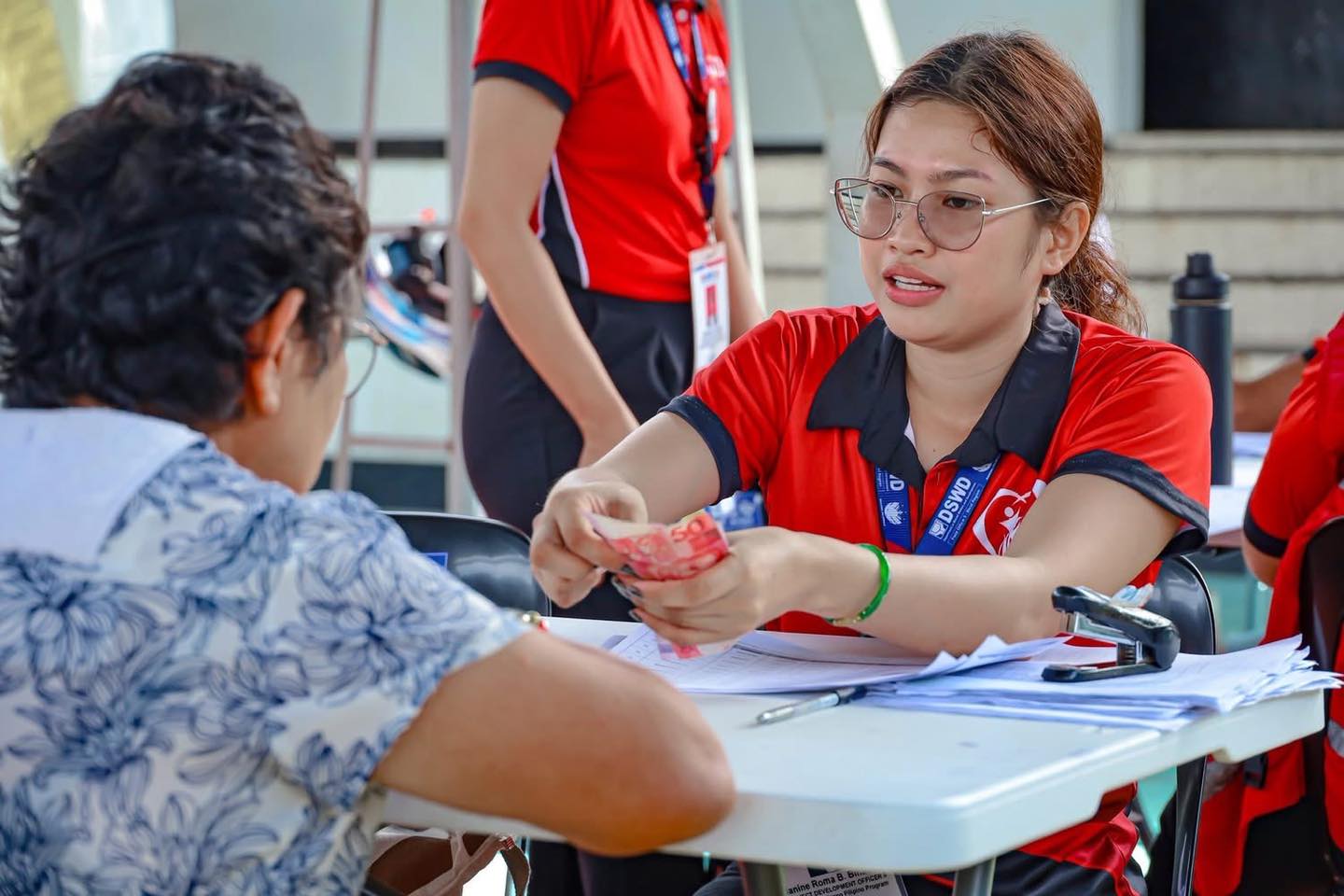
By Jose Cielito Reganit | Philippine News Agency
The Department of Social Welfare and Development (DSWD) has issued revised guidelines on the implementation of the emergency cash transfer (ECT) program to make it more responsive amid the multiple disasters in the country.
Assistant Secretary Irene Dumlao of the DSWD’s Disaster Response Management Group (DRMG) said the new guidelines make the ECT program more aligned to disaster response and early recovery efforts for internally displaced persons (IDPs).
“At the impact and immediate post-impact phase of a disaster, the ECT may be provided to IDPs for their relief and early recovery needs. The cash assistance provided can be used to buy nutritious food, hygiene items, medicine, clothing, and other supplies, which are not included in the relief packages provided by the DSWD,” Dumlao said in a news release on Thursday.
The ECT may also be used to help defray hospital expenses, transportation, educational support, and livelihood, so long as the affected family has not received any form of livelihood assistance from other agencies.
Dumlao pointed out that the ECT assistance may also be given as support during the crucial rehabilitation and recovery stage of the disaster operations, as indicated in the Rehabilitation and Recovery Plan.
“Ninety days after a disaster, the provision of ECT may be extended to form part of the rehabilitation and recovery efforts for IDPs. The cash assistance at this stage is usually to support livelihood recovery and other income-generating activities of the disaster-affected families,” she said.
Under the new guidelines, the ECT can be rolled out based on three important triggers, the first of which is the declaration of a state of calamity in a certain locality by the President, the provincial board, or the municipal/city local government council.
Another trigger is the market operability in the affected area based on the national/regional/local disaster risk reduction and management council’s situation report.
“This is important because we need to assess whether local markets in disaster-affected areas are functional and able to supply goods and services to meet the needs of the families. This ensures that the cash assistance interventions are appropriate and will indeed be of help,” Dumlao said.
The third trigger relies on the Post-Disaster Needs Assessment (PDNA) report.
“The need for the ECT assistance must be included in the PDNA as the basis for determining the extent of damages and in identifying the recovery needs,” she said.
The DSWD also laid out the coverage and classification of the ECT beneficiaries under the revised guidelines.
ECT beneficiaries include severely affected and slightly affected families by disasters and calamities, including typhoons, landslides, floods, earthquakes, volcanic eruptions, armed conflicts, and health outbreaks.
“When we say severely affected, this pertains to families with totally damaged houses, displaced families in evacuation centers for medium- and long-term displacements, and families with significant loss in their income or livelihood source,” Dumlao explained.
“The slightly affected include families with partially damaged houses, those in evacuation centers for a short period of time, as projected. We also include in this category those who suffered minimal loss of income or livelihood and those families with sick or injured family members as an effect of the disaster.”
The amount of cash assistance also differs based on beneficiary category and is also subject to the assessment of the needs of the affected families.
“We assure the public that the DSWD’s ECT program is implemented in accordance with the needs of the target beneficiaries. Although we are dealing with consecutive disasters and their massive destructive effects, the DSWD affirms that the cash assistance will be given to the affected families to aid them in their early recovery and rehabilitation,” Dumlao said.
The DSWD has rolled out the ECT for those affected by the Cebu and Davao quakes, as well as by Typhoon Opong and Tropical Storm Ramil in Masbate and Capiz, respectively.
